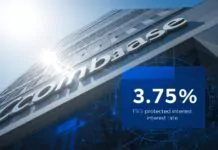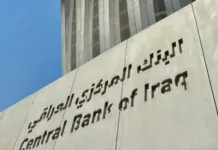Uniswap, one of the largest decentralized exchanges in the world, has unveiled a sweeping proposal that could redefine how value flows through its ecosystem.
The plan — internally dubbed “UNIfication” — outlines three major changes:
- Activating protocol fees for the first time,
- Using those fees to burn UNI tokens, and
- Merging Uniswap Labs and the Uniswap Foundation into a single operational structure.
The proposal, published on November 10, is designed to reduce UNI’s circulating supply, align governance and growth strategies, and strengthen the connection between the protocol’s success and the token’s value.
Activating Protocol Fees and Introducing UNI Burns
For years, Uniswap’s trading activity generated billions in volume without directing any protocol-level revenue back to UNI holders. That could soon change.
Under the new plan, Uniswap will activate protocol fees across its decentralized exchange and channel a portion of those fees directly into a UNI burn mechanism.
That means the more Uniswap is used — the more UNI gets destroyed — reducing supply and potentially increasing scarcity over time.
The fee capture will also extend to Unichain, Uniswap’s upcoming layer-2 network, where sequencer fees will feed into the same burn system.
To jumpstart the process, the proposal includes a one-time burn of 100 million UNI from the treasury — roughly 16% of the current circulating supply. The burn represents an estimate of the value that might have been accumulated had the fee system been active since Uniswap’s 2020 launch.
This immediate reduction would drop circulating supply from about 625 million UNI to 525 million, setting a deflationary precedent for the protocol’s tokenomics.
New Incentive System — “Bid to Trade”
The proposal also introduces an innovative system where traders can bid UNI tokens to receive discounted trading fees.
The UNI used in these bids would then be permanently burned, creating a direct link between trading activity, user incentives, and supply reduction.
This mechanism aims to strengthen Uniswap’s liquidity and encourage more on-chain trading while continuously shrinking total UNI supply — a model similar to Ethereum’s burn mechanism (EIP-1559), but adapted for a decentralized exchange environment.
Merging the Foundation and Labs
Another key part of “UNIfication” is organizational consolidation.
The Uniswap Foundation and Uniswap Labs, which have operated separately since the token’s launch, would merge into a single unified entity.
Under this structure:
- Foundation staff would transition to Labs,
- Revenue from Uniswap’s interface, wallet, and API would no longer be collected by Labs,
- And all resources would instead focus on protocol-level growth and ecosystem incentives.
A growth budget, reserved from the treasury, will be allocated quarterly beginning in 2026 to support developers, partnerships, and adoption initiatives.
This merger is intended to simplify governance, streamline operations, and ensure that every part of Uniswap’s organization works toward a single mission — expanding protocol usage and strengthening UNI’s utility.
Regulatory Shift Clears the Path
Uniswap’s leadership noted that the timing of this proposal follows recent regulatory developments in the U.S., which they believe have removed previous legal barriers to implementing protocol-level fee sharing and active governance participation.
With those constraints lifted, Uniswap can now pursue a structure that directly connects governance, incentives, and token value.
Market Reaction
The market responded immediately. UNI’s price surged more than 40% within hours of the proposal’s release, reflecting renewed optimism among investors about Uniswap’s long-term token value and financial sustainability.
Analysts suggest that if approved and implemented, “UNIfication” could transform Uniswap into one of the first major decentralized finance platforms to achieve true on-chain value capture — where the protocol’s success directly translates into economic benefits for its community.







